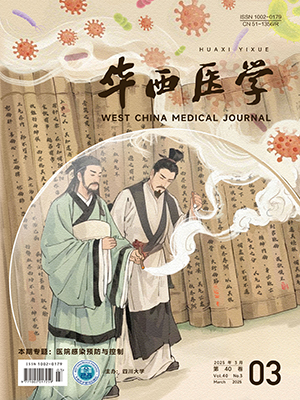| 1. |
Cabral JF, Braga I, Fraga A, et al. From open to laparoscopic living-donor nephrectomy: changing the paradigm in a high-volume transplant center. Transplant Proc, 2015, 47(4): 903-905.
|
| 2. |
Terasaki PI, Cecka JM, Gjertson DW, et al. High survival rates of kidney-transplants from spousal and living unrelated donors. N Engl J Med, 1995, 333(6): 333-336.
|
| 3. |
Kaths JM, Echeverri J, Linares I, et al. Normothermic ex vivo kidney perfusion following static cold storage-brief, intermediate, or prolonged perfusion for optimal renal graft reconditioning?. Am J Transplant, 2017, 17(10): 2580-2590.
|
| 4. |
Amrouche L, Aubert O, Suberbielle C, et al. Long-term outcomes of kidney transplantation in patients with high levels of preformed DSA: the Necker high-risk transplant program. Transplantation, 2017, 101(10): 2440-2448.
|
| 5. |
Xue JL, Eggers PW, Agodoa LY, et al. Longitudinal study of racial and ethnic differences in developing end-stage renal disease among aged medicare beneficiaries. J Am Soc Nephrol, 2007, 18(4): 1299-1306.
|
| 6. |
Kasiske BL, Neylan JF, Riggio RR, et al. The effect of race on access and outcome in transplantation. N Engl J Med, 1991, 324(5): 302-307.
|
| 7. |
Kim SJ, Schaubel DE, Fenton SS, et al. Mortality after kidney transplantation: a comparison between the United States and Canada. Am J Transplant, 2006, 6(1): 109-114.
|
| 8. |
Jin TB, Ma LF, Zhang JY, et al. Polymorphisms and phenotypic analysis of cytochrome P450 2D6 in the Tibetan population. Gene, 2013, 527(1): 360-365.
|
| 9. |
Chen S, Hong W, Shao H, et al. Allelic distribution of HLA class I genes in the Tibetan ethnic population of China. Int J Immunogenet, 2006, 33(6): 439-445.
|
| 10. |
Lu D, Lou H, Yuan K, et al. Ancestral origins and genetic history of Tibetan highlanders. Am J Hum Genet, 2016, 99(3): 580-594.
|
| 11. |
Yi X, Liang Y, Huerta-Sanchez E, et al. Sequencing of 50 human exomes reveals adaptation to high altitude. Science, 2010, 329(5987): 75-78.
|
| 12. |
Ji LD, Qiu YQ, Xu J, et al. Genetic adaptation of the hypoxia-inducible factor pathway to oxygen pressure among Eurasian human populations. Mol Biol Evol, 2012, 29(11): 3359-3370.
|
| 13. |
Beall CM. Two routes to functional adaptation: Tibetan and Andean high-altitude natives. Proc Natl Acad Sci USA, 2007, 104(Suppl 1): 8655-8660.
|
| 14. |
Niu Q, Zhang R, Zhao M, et al. Differences in platelet indices between healthy Han population and Tibetans in China. PloS one, 2013, 8(6): e67203.
|
| 15. |
Luo H. Traditional Tibetan medicine in China: an overview of current status and prospects. Chin J Integr Med, 2015, 21(1): 67-70.
|
| 16. |
D’Agostino RB Jr. Propensity score methods for bias reduction in the comparison of a treatment to a non-randomized control group. Stat Med, 1998, 17(19): 2265-2281.
|
| 17. |
Taber DJ, Gebregziabher M, Payne EH, et al. Overall graft loss versus death-censored graft loss: unmasking the magnitude of racial disparities in outcomes among US kidney transplant recipients. Transplantation, 2017, 101(2): 402-410.
|
| 18. |
Davis S, Cooper JE. Acute antibody-mediated rejection in kidney transplant recipients. Transplant Rev (Orlando), 2017, 31(1): 47-54.
|
| 19. |
Mesnard L, Muthukumar T, Burbach M, et al. Exome sequencing and prediction of long-term kidney allograft function. PLoS Comput Biol, 2016, 12(9): e1005088.
|
| 20. |
Sutherland SM, Li L, Sigdel TK, et al. Protein microarrays identify antibodies to protein kinase Czeta that are associated with a greater risk of allograft loss in pediatric renal transplant recipients. Kidney Int, 2009, 76(12): 1277-1283.
|
| 21. |
Sigdel TK, Li L, Tran TQ, et al. Non-HLA antibodies to immunogenic epitopes predict the evolution of chronic renal allograft injury. J Am Soc Nephrol, 2012, 23(4): 750-763.
|
| 22. |
Jackson AM, Sigdel TK, Delville M, et al. Endothelial cell antibodies associated with novel targets and increased rejection. J Am Soc Nephrol, 2015, 26(5): 1161-1171.
|
| 23. |
Taber DJ, Gebregziabher M, Hunt KJ, et al. Twenty years of evolving trends in racial disparities for adult kidney transplant recipients. Kidney Int, 2016, 90(4): 878-887.
|
| 24. |
Taber DJ, Egede LE, Baliga PK. Outcome disparities between African Americans and Caucasians in contemporary kidney transplant recipients. Am J Surg, 2017, 213(4): 666-672.
|
| 25. |
Slavcheva E, Albanis E, Jiao Q, et al. Cytotoxic T-lymphocyte antigen 4 gene polymorphisms and susceptibility to acute allograft rejection. Transplantation, 2001, 72(5): 935-940.
|
| 26. |
Ma J, Divers J, Palmer ND, et al. Deceased donor multidrug resistance protein 1 and caveolin 1 gene variants may influence allograft survival in kidney transplantation. Kidney Int, 2015, 88(3): 584-592.
|
| 27. |
Pasha MA, Newman JH. High-altitude disorders: pulmonary hypertension: pulmonary vascular disease: the global perspective. Chest, 2010, 137(6 Suppl): 13S-19S.
|
| 28. |
Aryal N, Weatherall M, Bhatta YK, et al. Blood pressure and hypertension in adults permanently living at high altitude: a systematic review and meta-analysis. High Alt Med Biol, 2016, 17(3): 185-193.
|
| 29. |
Chen W, Liu Q, Wang H, et al. Prevalence and risk factors of chronic kidney disease: a population study in the Tibetan population. Nephrol Dial Transplant, 2011, 26(5): 1592-1599.
|
| 30. |
Zhang L, Wang Z, Chen Y, et al. Prevalence and risk factors associated with chronic kidney disease in adults living in 3 different altitude regions in the Tibetan Plateau. Clin Chim Acta, 2018, 481: 212-217.
|
| 31. |
Zhou Y, Deng YM, Li C, et al. Comparison of characteristics of chronic kidney diseases between Tibet plateau and plain areas. Int J Clin Exp Pathol, 2014, 7(9): 6172-6178.
|
| 32. |
Gokoel SRM, Gombert-Handoko KB, Zwart TC, et al. Medication non-adherence after kidney transplantation: a critical appraisal and systematic review. Transplant Rev (Orlando), 2020, 34(1): 100511.
|




